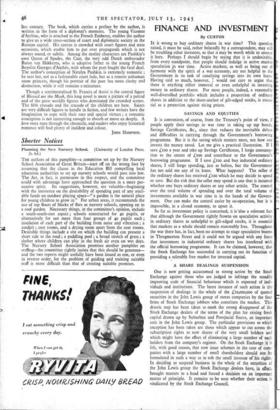Shorter Notices
Planning the New Nursery SchooL (University of London Press. 2s. 6d.) THE authors of this pamphlet—a committee set up by the Nursery School Association of Great Britain—start off on the wrong foot by assuming that the clause in the Education Bill compelling local education authorities to set up nursery schools would pass into law. The Act, in fact, is permissive in this respect, and the committee could with advantage have approached the question in a more per- suasive spirit. Its suggestions, however, are valuable—beginning with the insistence on the desirability of spending part of any avail- able funds on outdoor playing space—" a garden is the natural place for young children to grow in." For urban areas, it recommends the use of top floors of blocks of flats as nursery schools, opening on to a roof garden. Necessary things, in the committee's opinion, include a south-south-east aspect ; schools constructed for 4o pupils, or alternatively for not more than four groups of 40 pupils each ; insulation of each part of the building from noise and vibration ; a sandpit ; coat rooms, and a drying room apart from the coat rooms. DesirabIe things include a site on which the building can present a short side to the road ; a paddling pool ; a broad stretch of grass ; a shelter where children can play in the fresh air even on wet days. The Nursery SchOol Association promises another pamphlet on staffing—the committee rightly insists that this should be generous— and the two reports might usefully have been issued as one, or even in reverse order, for the problem of guiding and training suitable staff is more difficult than that of creating suitable premises.


























 Previous page
Previous page